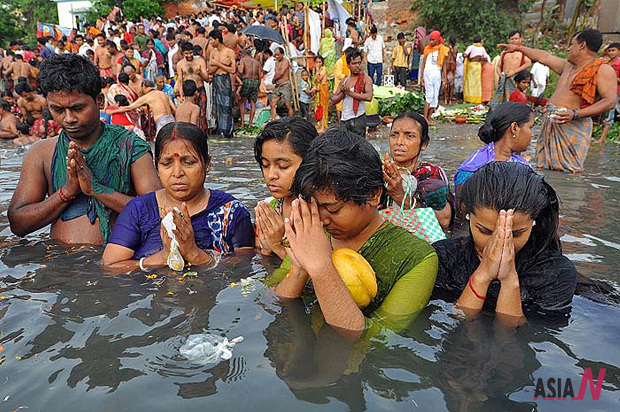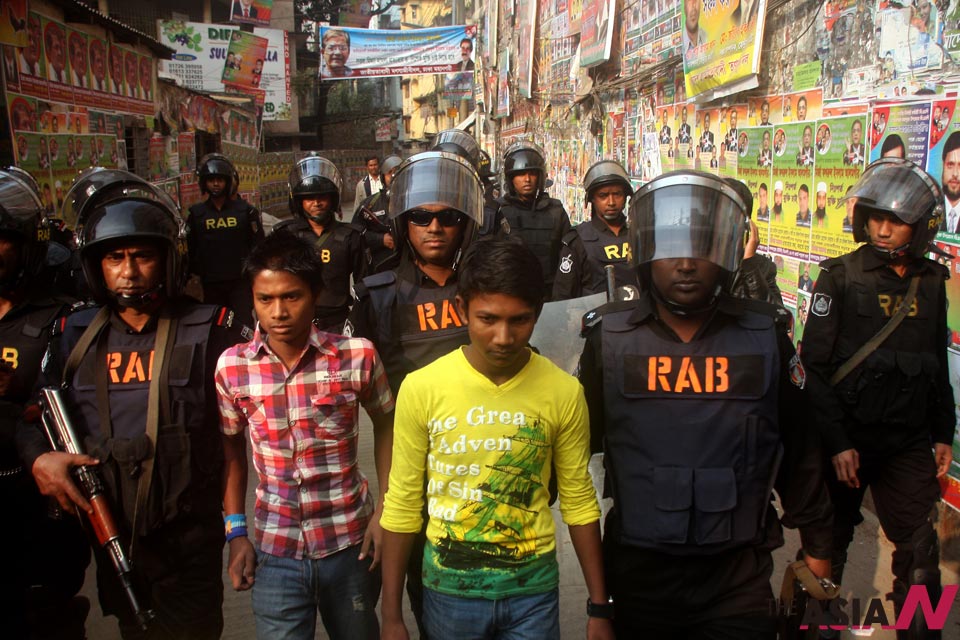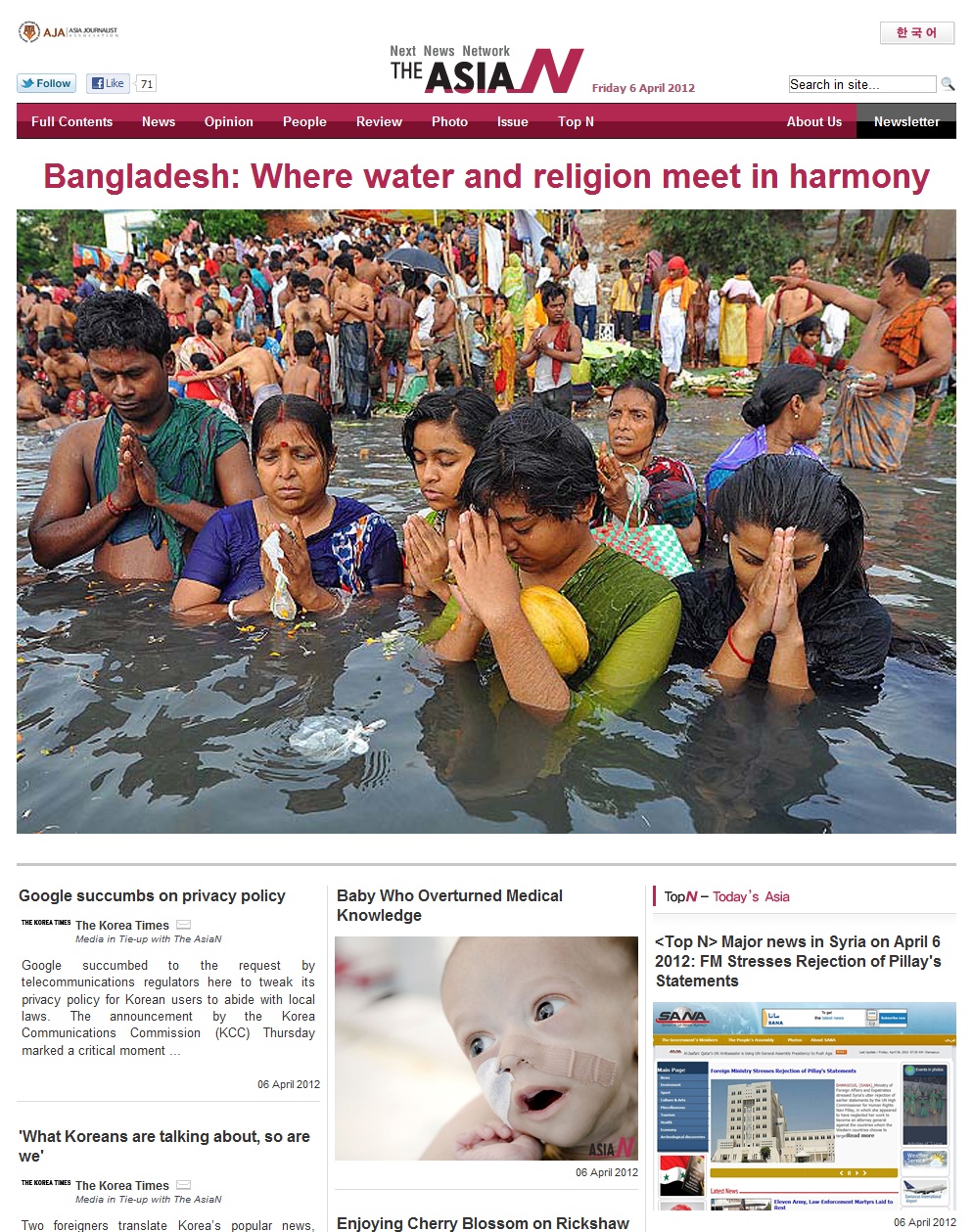
Bangladesh: Where water and religion meet in harmony
DHAKA, Bangladesh –Water is not only a crisis for Bangladesh but also an integral part of religious rituals in a country imbued with communal harmony over the centuries.
Bangladesh has been hosting a two-day annual “Astami Snan,” one of the religious festivals of the Hindu community, beginning from Friday in the river Bramahputra with due respect and solemnity at Langalbandh, a riverside village 20 kilo-metres southeast of Bangladesh capital Dhaka.
Langalbandh turned into a pilgrimage as tens of thousands of Hindu devotees including male, female and children from across the country, and neighbouring India, Nepal, Bhutan and Sri Lanka, started dipping into the old Bramaputra river facing the rising sun from Friday morning. The festival continued without any break till Saturday morning in 13 ghats (stairs for bathing).
The Snan Utsab (Bathing Festival) committee set up 20 reception camps to receive the pilgrims for overnight stay rest and leisure. Authorities also arranged the supply of pure drinking water, and electricity while the local government body set up 60 temporary latrines and 26 makeshift enclosure for changing cloths for women after bathing. Two medical teams were also deployed for attending emergency health need for the pilgrims belonging to the Hindu community.
A huge fair is also arranged on the occasion of the Hindu festival. Although it is a Hindu religious festival, people belonging to majority religion, Muslims, also come to enjoy the festivity and visits the fair to sell or buy articles of arts and crafts on this occasion.
Hindus are Bangladesh’s largest religious minority, about nine percent of the population

Over the centuries, Langalband remains a Hindu holy place situated on the bank of old Brahmaputra river flowing from North to South. Every year on the 8th day of lunar fortnight in the Bengali month of Chaitra(which falls on March 30-31) thousands of Hindu devotees from home and abroad assemble there for Astami snan, a holy bath in the river. They believe that this bath will please Brahman(the creator of the universe) and they will be relieved of their sins and distresses.
As the holy river washes the place unceasingly, unending streams of people visit the place round the year in seeking blessings of Brahma. The 2-kilometre long holy site of Langalband witnesses devotees of all ages. Most local people believe that the blessings of all the holy places of the world are pooled in the waters of theBrahmaputraon the auspicious day of Chaitra and by touching the water a believer becomes free of all sins and attains eternal salvation.
There is a long story about how Langalband became a holy place. A legend goes that once there lived a great ascetic or mahamuni named Jamadagni. He had a beautiful wife by the name of Renuka, who came from a royal family. They had 5 sons and the youngest was named Parashuram. The family lived a simple life in the hermitage and Renuka almost forgot the luxuries of life she lead in the house of her parents.
One day the king of Martikabartya passed by the cottage of the Muni while on his way to hunt deer with his retinue. They were happy and gay. This reminded Renuka of her life before her marriage with Jamadagni and she started weeping. Muni Jamadagni was furious to see that his wife, a woman of 5 children living with an ascetic was so eager for enjoyment and luxury. He at once ordered his sons to kill their mother. When all of them refused to comply, he asked Parashuram to do it. Parashuram then took an axe and killed his mother with the blow of it. Although he did it by an order of his father, it was a sin and a purnishment, the axe got stuck to his hands so firmly that nothing could release it. Jamadagni then asked him to visit different holy places and take bath in their waters to get rid of the curse.
At the same time, Jamadagni started the search for the holy waters for his son. He came to know of the greatness of godBrahmaputrawho was then hiding in theHimalayasin the form of a lake. He moved around theHimalayasfor long but could not findBrahmaputra. Finally, he could see it at the bottom of theHimalayas. He became extremely happy and prayed for his sin to be washed in its water. As soon as Parashuram jumped into the lake, the axe separated from his hand. This is how he could atone for his sin of matricide.
Parashuram at once decided to bring the holy water of the Brahmaputrato the plains for the good of the common people. He attached his axe to a langal (plough) and dug a canal. He brought the water of ‘LakeBrahmaputra’ down a long way through the hills and valleys and stopped at Langalband completely exhausted. There he stopped ploughing the land. Since then theBrahmaputra began flowing along the canal dug by him. And this is how the place was named Langalband and turned into one of the holiest places for the Hindus
This is how the holy bath inBrahmaputrahas been taking place on this auspicious day every year at Langalband. оформить займ онлайн на карту моментально




